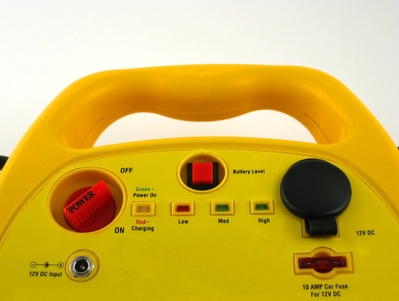
When a car has a parasitic electrical draw, it is possible that its battery will not be able to hold a charge when the car is off. This could result in the car being unable to start up after an extended period of time without being turned on. Similarly, an aging battery or a battery than has been in storage for too long could lack the charge needed for function. Slow charging a car battery is an ideal way to safely recharge a car battery to its normal, functioning levels.
Put safety glasses on before attempting to slow charge the battery. Batteries generate hydrogen gas, which is flammable and can be explosive. The safety glasses will protect your eyes from shrapnel in the case of the car battery exploding.
Place both the battery and the charger in a location away from any ignition sources, and away from people. This will prevent an explosion and the unnecessary injury to others. If the battery will be charged inside of the car, make sure to inform anyone that may be in proximity of the car to avoid being near the the charger and battery.
Set the amp setting to "Low" (trickle charge) on the charger in order to charge the battery slowly. Disregard this if your battery has been designed to send only a trickle charge.
Set the volt setting to 12 volts if the option is available.
Connect the charger's positive (red) alligator clip to the battery's positive terminal which is usually marked "POS" or "+."
Connect the charger's negative (black) alligator clip to the battery's negative terminal which is usually marked "NEG," or "-." If you're working on a battery still inside the car, attach the negative clip to the car's metal framework or to the engine block.
Connect the charger to a wall outlet which supports a three-wire cord in order to ground the charger. Use an extension chord only if absolutely needed. Refer to your charger's manual in order to verify which type of extension cord you can use in relation to the cord's length and size.
Turn the charger on if it has an "On/Off" or timer switch. Some chargers automatically begin charging the battery once plugged into the outlet.
Wait until the battery is fully charged. This task will take hours to accomplish. Most chargers indicate when the battery has been fully charged. If your charger doesn't have an indicator, read your manual in order to find out how much time it should take for the charger to charge the battery.
Unplug the charger once the battery is fully charged. Remove the negative alligator clip from the negative terminal battery first, then the positive clip from the positive terminal.